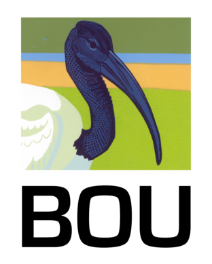Earlier messages suggest that there is a move towards splitting, but surely this is not an intentional objective. Take for instance the fact that prior to 1897 the British race of Willow Tit was unknown to science. Now that birders are aware of the vocal differences in Marsh and Willow, this seems quite mad. But I would argue that we live in a time of better optics, in a time when we can record audio, take high res images, and have better base reference documents, and yes, scientists can also test DNA. Researchers can also travel more easily to far flung parts of the world. I would therefore argue that the more places we travel and the closer we look, the more chance that subtler differences are discovered which lead to splits. It seems less probable that what appeared obvious differences before, should turn out to be erroneous and that species should be lumped. Closer and better scrutiny therefore seems more likely to lead to splits.
In a recent article in the Asian Bird Journal describing changes in taxonomy, I think all the split were supported by differences in morphology (though some differences were small). What I am not sure about is whether the morphological differences were noted and then DNA tested or vice versa. It would seem an expensive option to test everything and hope, but then a lot of species are being discovered in specific areas of biodiversity and diversification.
I think that there are probably very few truly cryptic species - in fact I can’t think of any. The only contender I know of was Red Crossbill, but I recall reading somewhere that Red Crossbill calls can be learnt and changed. None of the current list split Red Crossbill into more than two species, and from what I have read, I understand it is extremely doubtful they ever will.
Earlier messages also suggest that the definition of a species is somewhat arbitrary. I am not totally convinced by this. My understanding is that the process is as follows - a researcher studies a species (say Red Grouse) and proposes in a scientific paper that the research indicates it is a valid species. Taxonomists, working on behalf of global taxonomies (IoC, Birdlife, Clements etc.) then review the published paper and determine whether the evidence is robust enough for acceptance. I presume that the review is made against set criteria, and not just an arbitrary decision, though the criteria are unknown to me and would probably surpass my scientific knowledge.
It would be good if world taxonomies stated their reasons for some decisions, as it may be possible for birders as citizen scientists to be able to close knowledge gaps - are mixed pairs of Arctic and Common Redpoll ever encountered? I hope to visit breeding areas in Norway, so along with many other birders, I could keep my eyes peeled. Birdlife produces a taxonomic notes page, and in some cases they have not accepted a split because acoustic analysis has yet to be completed - as a keen sound recordist, if I know what they want and am off on some far flung holiday, then who knows - I may be able to come up trumps.
One thing is for certain, I think taxonomists are better qualified than I am to make the decision on a species. I wouldn’t have a scooby whether Green-winged Teal should be a subspecies of Common Teal or the two ducks should be separate species. In this example, different taxonomies have reached different conclusions. In fact the three main taxonomies currently are at variance quite significantly across the board, affecting about ten percent of global species. As an individual you could easily spend a lifetime just trying to unravel a small part of your global list. Best just to pick a taxonomic authority and let the experts ponder the issue.
The debate about counting Fea’s/Deserta’s is surely one about listing rather than ornithology/birdwatching. It seems to me it is complicated by the probability of a repeat occurrence. By this I mean we may be miffed if we saw the Avon White or Black-bellied Storm-petrel, as it was probably a once in a lifetime event - one that got way. We would not however be so upset if we had seen an non vocal Mallow Tit, as (provided Willow Tits don’t die out in the UK) it is a fair conclusion that you will in the future encounter both species sufficiently well to tick.
Lists are rather subjective, only an individual knows that they saw a species sufficiently well to ID. I know at national level there is some policing of list and competition, but this can only go so far. As an example I remember twitching a Forster’s Tern at Point of Ayr in 1984. After a very long wait for the tide to turn I eventually found the bird and got other birders on to it - after about 5mins one birder admitted he was not on it, but had said he was because he hadn’t wanted to dip! - not even Lee Evans alleged method of recording who shows at a twitch, could have unravelled such fibbing.
I think global lists are much more arbitrary and to be honest most big listers seem to deal in round numbers (i.e over X,000). Overseas lists are also plagued by lack of experience, and possible errors of judgement. For tours there is the question, did I really see it well enough, or am I just taking the tour leaders word for it?
I actually try to keep records of one’s that got away - flight views of a probable Short-tailed Paradigalla, or just a too distant probable Pom.
I think let taxonomists decide what’s a species, let field ornithologist define what can be safely identified in field guides and ID papers (whether species or subspecies) and let birders and listers record what they feel confident with and happy about!









